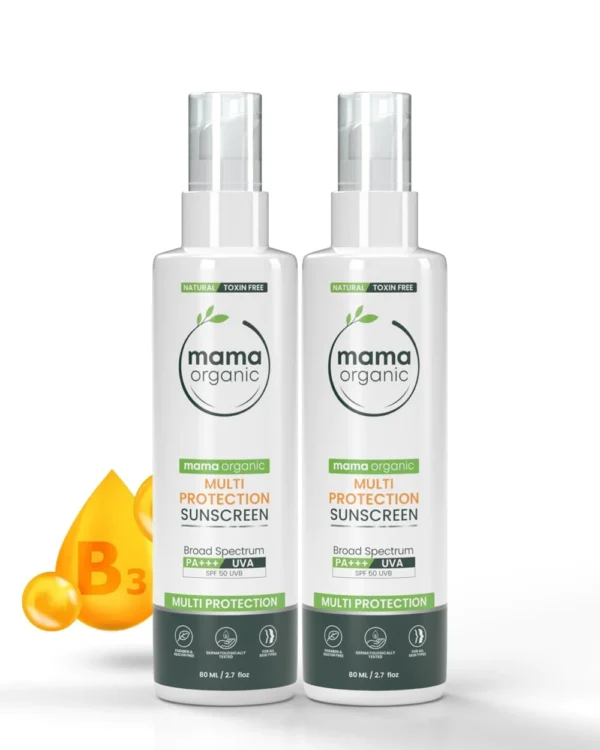Introduction
When it comes to protecting your skin from the harmful effects of the sun, choosing the right sunblock is crucial. With a plethora of options available in the market, finding the best sunblock for your specific needs can be a daunting task. In this comprehensive guide, we will delve into the world of sunblocks, discussing the importance of sun protection, the different types of sunblocks available, and providing a curated list of the best sunblocks for various skin types and activities.
Why Sunblock Matters
The Dangers of UV Radiation
Before we dive into the best sunblocks on the market, it’s essential to understand why sun protection matters. The sun emits ultraviolet (UV) radiation, consisting of UVA and UVB rays. Prolonged exposure to these rays can lead to several detrimental effects on the skin, including:
- Sunburn: UVB rays are responsible for sunburn, which can cause redness, pain, and peeling skin.
- Premature Aging: UVA rays contribute to premature aging, leading to wrinkles, fine lines, and age spots.
- Skin Cancer: UV radiation is a major risk factor for skin cancer, including melanoma, the deadliest form of skin cancer.
The Role of Sunblock
Sunblock, also known as sunscreen, is a topical product designed to protect the skin from UV radiation. It acts as a barrier, either by absorbing, reflecting, or scattering the harmful rays. Using the right sunblock can significantly reduce your risk of sunburn, premature aging, and skin cancer.
Types of Sunblocks
There are two primary types of sunblocks: chemical and physical (mineral) sunblocks. Understanding the differences between these types can help you make an informed decision when choosing the best sunblock for your needs.
Chemical Sunblocks
- How They Work: Chemical sunblocks contain organic compounds that absorb UV radiation and convert it into heat, which is then released from the skin. They work by absorbing either UVA or UVB rays or a combination of both.
- Advantages:
- Lightweight and easy to apply.
- Often available in various formulations, including lotions, sprays, and gels.
- Offer broad-spectrum protection when formulated correctly.
- Disadvantages:
- Some individuals may experience skin sensitivity or allergies to certain chemical filters.
- Chemical sunblocks may require 15-30 minutes to become effective after application.
Physical (Mineral) Sunblocks
- How They Work: Physical sunblocks use mineral compounds such as zinc oxide or titanium dioxide to create a physical barrier on the skin. They reflect and scatter both UVA and UVB rays.
- Advantages:
- Ideal for individuals with sensitive skin, as they are less likely to cause irritation.
- Provide immediate protection upon application.
- Effective against a wide range of UV radiation.
- Disadvantages:
- Can leave a white cast on the skin, especially in high concentrations.
- May feel heavier on the skin compared to chemical sunblocks.
Factors to Consider When Choosing Sunblock
Selecting the best sunblock requires considering various factors to ensure it suits your skin type and intended activities. Here are some key factors to keep in mind:
Skin Type
Different skin types have varying needs when it comes to sun protection:
- Sensitive Skin: If you have sensitive skin, opt for sunblocks with physical blockers like zinc oxide or titanium dioxide. Look for hypoallergenic and fragrance-free options.
- Oily or Acne-Prone Skin: Choose a lightweight, non-comedogenic (won’t clog pores) sunblock in a gel or lotion form.
- Dry Skin: Look for sunblocks with added moisturizing ingredients like hyaluronic acid or glycerin.
SPF Rating
The Sun Protection Factor (SPF) indicates a sunblock’s effectiveness against UVB rays. The higher the SPF, the greater the protection. Dermatologists generally recommend using an SPF of at least 30 for daily use and higher if you’ll be spending extended time outdoors.
Broad-Spectrum Protection
Ensure that the sunblock provides broad-spectrum protection, meaning it shields against both UVA and UVB rays. Look for the “broad-spectrum” label on the product.
Water Resistance
If you plan to swim or engage in activities that make you sweat, choose a water-resistant sunblock. However, remember that even water-resistant sunblocks should be reapplied after swimming or excessive sweating.
Application Form
Consider the sunblock’s form, such as lotion, cream, spray, or stick. Choose one that suits your preferences and intended use. Sprays are convenient for quick application, while creams may offer better coverage.
The Best Sunblocks for Every Need
Now that we’ve covered the essentials, let’s explore some of the best sunblocks available on the market, categorized by skin type and specific activities.
Best Sunblocks for Sensitive Skin
- EltaMD UV Clear Broad-Spectrum SPF 46:
- Features zinc oxide for gentle protection.
- Fragrance-free and suitable for sensitive or acne-prone skin.
- Provides excellent UVA and UVB protection.
- CeraVe Hydrating Mineral Sunscreen SPF 30:
- Contains ceramides to help retain skin moisture.
- Non-comedogenic and suitable for sensitive skin.
- Affordable and widely available.
Best Sunblocks for Outdoor Sports
- Neutrogena Sport Face Oil-Free Lotion SPF 70:
- Designed for high-performance activities.
- Oil-free and sweat-resistant.
- Provides strong protection against UVB rays.
- Coppertone Sport Sunscreen Spray SPF 50:
- Convenient spray application for active individuals.
- Water-resistant and long-lasting.
- Guards against UVA and UVB rays.
- La Roche-Posay Anthelios Melt-in Milk Sunscreen SPF 100:
- Offers extremely high SPF for daily protection.
- Lightweight and suitable for under makeup.
- Provides broad-spectrum coverage.
- EltaMD UV Elements Broad-Spectrum SPF 44:
- Tinted sunblock for a natural look.
- Contains hyaluronic acid for hydration.
- Ideal for daily use, even on sensitive skin.
Sunblock Application Tips
Applying sunblock correctly is essential to maximize its effectiveness. Here are some tips to ensure proper sunblock application:
Apply Generously
Use a sufficient amount of sunblock to cover all exposed skin. For adults, this typically means about one ounce (enough to fill a shot glass) for each application.
Reapply Regularly
Sunblock should be reapplied every two hours, or more frequently if swimming or sweating heavily. Even water-resistant sunblocks lose their effectiveness over time.
Don’t Forget Your Lips
Use a lip balm or lipstick with SPF to protect your lips from UV damage.
Check Expiry Dates
Expired sunblocks may lose their effectiveness, so always check the product’s expiry date before use.
Conclusion
Choosing the best sunblock is a critical step in safeguarding your skin from the harmful effects of UV radiation. By considering factors such as your skin type, SPF rating, and intended activities, you can select the right sunblock for your specific needs. Remember to apply sunblock generously, reapply as needed, and make sun protection an integral part of your daily skincare routine. With the right sunblock, you can enjoy the sun safely and maintain healthy, youthful skin for years to come.








